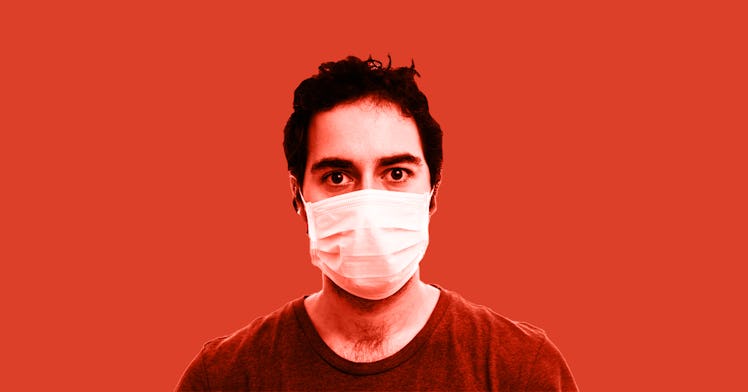Can A Face Mask Cause CO2 Poisoning? Fact-Checking The Conspiracy
Face masks are uncomfortable, sure, but they don't put you in harm's way. Here's what the science says.

Wearing a face mask is a bit uncomfortable. They restrict airflow, freak kids out, and running with a mask can be pretty damn uncomfortable. But are they safe? The fact that doctors and health professionals everywhere wear them regularly should be a hint. Still, this fact does not stop the mask-resistant’s skepticism. Some particularly vocal anti-maskers are now floating claims that these face coverings can lead to hypoxemia (low blood oxygen) and hypercapnia (basically, blood poisoning by carbon dioxide). These claims are bunk. Wearing a mask won’t harm you and there’s plenty of research that bears this out.
“It’s really, really hard to poison someone with CO2 unless you’re trying to,” said Bill Carroll, an adjunct professor of chemistry at Indiana State University. Carbon dioxide becomes toxic at concentrations above 4 percent, according to the US Department of Agriculture. For context, the normal concentration in our atmosphere is around 0.04 percent.
Theoretically, a tight enough face-covering could cause carbon dioxide to build up to toxic levels. “If you tie a plastic bag around your neck and inhale enough CO2, you will eventually pass out,” Carroll said.
Fortunately, you don’t need a plastic bag to protect the public from coronavirus. The face-coverings the general public are asked to use, such as surgical and cloth masks, aren’t tight enough and don’t have a dense enough weave to block the flow of carbon dioxide and oxygen, said Dr. Gopal Allada, a pulmonologist at Oregon Health & Science University. “Those molecules are pretty darn small,” he said.
In one small study published in Respiratory Physiology and Neurobiology, twenty subjects wearing surgical masks walked on treadmills for one hour. Scientists measured their blood oxygen and carbon dioxide concentrations, respiratory and heart rates, and core temperatures. After that hour, the scientists found no significant change in these measurements.
With N95 masks, it’s a slightly different story. There is some evidence that these masks, which tend to fit more tightly over the wearers face, can decrease oxygen levels and increase carbon dioxide levels. A small study of ten healthcare workers found that the oxygen and carbon dioxide concentrations within N95 masks fell below workplace standards set by the Occupational Safety and Health Administration. Still, when the scientists compared the subjects’ blood oxygen levels after one hour on the treadmill in an N95 mask versus an hour without, they found no difference. Another study published in the American Journal of Infection Control found similar results with pregnant study subjects — after an hour of walking in N95 masks, the blood oxygen levels of pregnant women and non-pregnant women alike hadn’t changed. The masks also had no apparent effect on the fetuses, whose heart rate didn’t change throughout the study.
The Centers for Disease Control (CDC) recommends that the general public leaves N95 masks for healthcare professionals and those on the frontlines. These masks are more effective at keeping others’ germs out, but you don’t need one to keep others safe from your own germs; a cloth mask works just fine for that, Carroll said.
Some people wearing cloth masks do experience discomfort or a sensation that they’re not getting enough air. That’s not because oxygen and carbon dioxide concentrations have changed. Instead, the discomfort has to do with physical resistance from the mask as you inhale. Rather than taking off the mask entirely, Carroll recommends that people having a hard time breathing through their mask loosen it or just get a new one.
This resistance can decrease your airflow, but not to a dangerous extent, Dr. Allada said. After all, doctors and surgeons wear face masks every day for hours at a time without experiencing health issues. “If there was some harm to us, we would put up a stink,” Dr. Allada said. But for people who already have difficulty breathing, such as individuals with chronic obstructive pulmonary disease (COPD), wearing a face mask for a long period of time might pose more of a risk than to the general public. The CDC recommends that these people, as well as those unable to remove a mask without assistance, avoid wearing face coverings entirely. (But people with lung disease should avoid going out in the first place, the CDC also recommends — they’re at higher risk of severe infection.)
The bottom line: As long as you’re healthy, wearing a mask poses no risk. “It may be uncomfortable,” Carroll said. “It’s also not gonna kill you.”
This article was originally published on